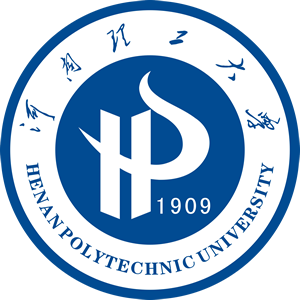| Time: 2024-09-24 | Counts: |
ZHANG A C, ZHANG J F, ZHANG D,et al.Study on the removal of elemental mercury by microspherical Br-doped BiOCl comosite photocatalyst[J].Journal of Henan Polytechnic University(Natural Science) ,2024,43(6):90-99.
Received:2022/02/27
Revised:2022/04/13
Online:2024-09-24
Study on the removal of elemental mercury by microspherical Br-doped BiOCl
comosite photocatalyst
ZHANG Anchao, ZHANG Jingfan, ZHANG Dan, SUN Zhijun, ZHANG Xu, LIU Yanwen, ZHENG Haikun
School of Mechanical and Power Engineering,Henan Polytechnic University,Jiaozuo 454000,Henan,China
Abstract:Photocatalytic oxidation is an effective technology to control atmospheric mercury pollution. Objectives To develop a low-cost visible-light-driven mercury removal catalyst, Methods microspherical ![]() composite photocatalysts with different molar contents of bromine(Br) were synthesized by an one-step coprecipitation method,and their photocatalytic performances of Hg0 removal under fluorescent lamp(FSL) were implemented in a wet photocatalytic mercury removal device.The physical and chemical structures of the samples were analyzed by N2 adsorption-desorption,XRD,UV-Vis DRS,SEM,HRTEM,XPS and ESR.Moreover,the charge transfer between BiOCl and BiOBr was studied using density functional theory. Results The results showed that compared with BiOCl and BiOBr,the photocatalytic performances of
composite photocatalysts with different molar contents of bromine(Br) were synthesized by an one-step coprecipitation method,and their photocatalytic performances of Hg0 removal under fluorescent lamp(FSL) were implemented in a wet photocatalytic mercury removal device.The physical and chemical structures of the samples were analyzed by N2 adsorption-desorption,XRD,UV-Vis DRS,SEM,HRTEM,XPS and ESR.Moreover,the charge transfer between BiOCl and BiOBr was studied using density functional theory. Results The results showed that compared with BiOCl and BiOBr,the photocatalytic performances of ![]() composites were all improved,and the Hg0 removal efficiency of BiOBr0.2Cl0.8 photocatalyst reached as high as 90.3%,which was about 50% than that of pure BiOCl.Compared with
composites were all improved,and the Hg0 removal efficiency of BiOBr0.2Cl0.8 photocatalyst reached as high as 90.3%,which was about 50% than that of pure BiOCl.Compared with ![]() and
and ![]() ,Cl− and
,Cl− and ![]() exhibited significant inhibitions on Hg0 removal.The specific surface area of BiOBr0.2Cl0.8 composites was slightly higher than that of BiOBr and BiOCl,which would be beneficial for providing more reactive sites.With the gradual increase of Br content,the XRD characteristic peak intensity of BiOCl gradually decreased,and the photocatalytic absorption capacity appeared redshift regularly,indicating a strong interaction between BiOBr and BiOCl,not a simple mechanical mixing.Both Bi 4f and O 1s of the BiOBr0.2Cl0.8 composite material were shifted towards higher binding energies,indicating that the introduction of Br affected the species of Bi and O in BiOCl.The mechanism analysis displayed that the three active species were involved in the oxidative process of Hg0 removal with the high-to-low order of
exhibited significant inhibitions on Hg0 removal.The specific surface area of BiOBr0.2Cl0.8 composites was slightly higher than that of BiOBr and BiOCl,which would be beneficial for providing more reactive sites.With the gradual increase of Br content,the XRD characteristic peak intensity of BiOCl gradually decreased,and the photocatalytic absorption capacity appeared redshift regularly,indicating a strong interaction between BiOBr and BiOCl,not a simple mechanical mixing.Both Bi 4f and O 1s of the BiOBr0.2Cl0.8 composite material were shifted towards higher binding energies,indicating that the introduction of Br affected the species of Bi and O in BiOCl.The mechanism analysis displayed that the three active species were involved in the oxidative process of Hg0 removal with the high-to-low order of ![]() ,h+,·OH. Conclusions The improvement of photocatalytic activity was mainly due to the formation of Z-type heterojunction between BiOCl and BiOBr,which effectively enhanced the separation of photo-generated charges.The study provided a new idea for the development of low-cost and efficient bismuth oxyhalide-based photocatalysts for mercury removal.
,h+,·OH. Conclusions The improvement of photocatalytic activity was mainly due to the formation of Z-type heterojunction between BiOCl and BiOBr,which effectively enhanced the separation of photo-generated charges.The study provided a new idea for the development of low-cost and efficient bismuth oxyhalide-based photocatalysts for mercury removal.
Key words:photocatalyst;BiOCl;BiOBr;the removal of elemental mercury
- 附件【010_2022020067_张安超.pdf】Download 次


